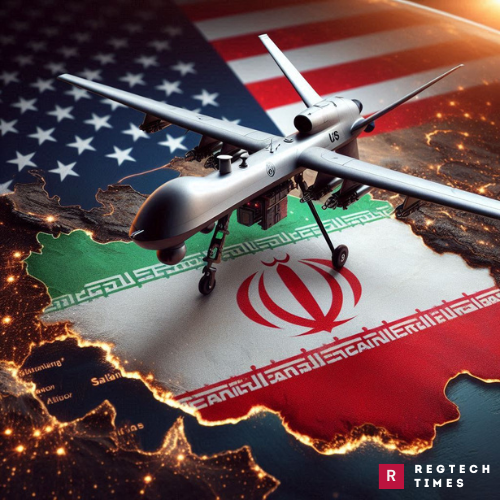In the realm of geopolitics, the delicate dance between nations often involves not just overt military actions but also covert strategies aimed at disrupting adversaries’ capabilities.
The recent move by the United States to impose sanctions on four entities linked to Iran’s unmanned aerial vehicle (UAV) program highlights a multifaceted approach to curb Tehran’s military advancements. This strategic maneuver, orchestrated by the US Treasury Department’s Office of Foreign Assets Control (OFAC), reveals a concerted effort to stymie Iran’s efforts in UAV development and proliferation, echoing broader concerns regarding regional stability and global security.
Targeted Entities: Cutting the UAV Supply Chain
Central to these sanctions are the entities affiliated with Rayan Roshd Afzar Company (RRA), identified for their involvement in acquiring vital components crucial for Iran’s UAV program. This targeted approach aims to disrupt the supply chain sustaining Iran’s UAV capabilities, hindering Tehran’s efforts to bolster and enlarge its drone fleet. Such measures highlight the importance of severing critical logistical support to impede Iran’s military objectives, especially considering its active role in regional conflicts and backing of proxy groups. By targeting the foundation of Iran’s UAV program, the US seeks to undermine Tehran’s ability to assert military dominance in the region.
The Role of IAIO: Strategic Oversight
A prominent figure singled out by OFAC is Afshin Khajeh Fard, who serves as the chief of the Iran Aviation Industries Organization (IAIO), a subsidiary of Iran’s Ministry of Defense and Armed Forces Logistics. Khajeh Fard’s pivotal role in supervising IAIO’s UAV production signifies Iran’s determined pursuit of self-reliance in military technology, aiming to diminish dependence on external sources. These sanctions represent a direct reaction to Iran’s ongoing advancements in UAV technology, highlighting its relentless pursuit of military modernization and the imperative for international measures to curb its military aspirations.
Previous Designations: A Persistent Threat
RRA and its affiliated entities are no strangers to OFAC’s scrutiny, having faced previous designations in July 2017 due to their engagement in proliferation activities linked to Iran’s military. This repetition of sanctions emphasizes the ongoing menace posed by Iran’s UAV program and the pressing need to mitigate its proliferation endeavors. Especially in conflict zones where these drones have been utilized against US interests and allies, the reiteration of sanctions signals a resolute stance to counter Iran’s disruptive actions and safeguard regional stability and international security.
Broader Context: Implications for Global Security
Understanding the broader context of these sanctions is imperative to grasping their significance within the geopolitical sphere. Iran’s UAV program serves as a tangible expression of its aspirations to wield influence in regional conflicts and challenge US interests. With Iranian drones deployed by Russia in Ukraine and by regional terrorist proxies, security dynamics in these volatile regions are further complicated. The imposition of US sanctions sends a resolute message of deterrence, intended to restrain Iran’s adventurous behavior and disrupt the prevailing status quo in conflict zones, thus promoting stability and security.
Strategic Implications: Disrupting Iran’s Military Capabilities
Strategically, these sanctions carry implications far beyond economic constraints. Through targeting key entities integral to Iran’s UAV program, the US aims to erode Tehran’s military prowess and limit its regional power projection. Disruption of the supply chain not only obstructs Iran’s current UAV activities but also poses obstacles to its long-term aspirations in military technology advancement.
To summarize, the imposition of sanctions on entities associated with Iran’s UAV program signifies a strategic maneuver on the geopolitical chessboard. It highlights the US’s resolve to confront Iran’s military progress and mitigate the threats posed by its UAV capabilities. As tensions persist in conflict zones where Iranian drones operate, the effectiveness of these sanctions will be closely monitored. Their outcomes will significantly influence the course of regional security dynamics and global stability in the foreseeable future.


